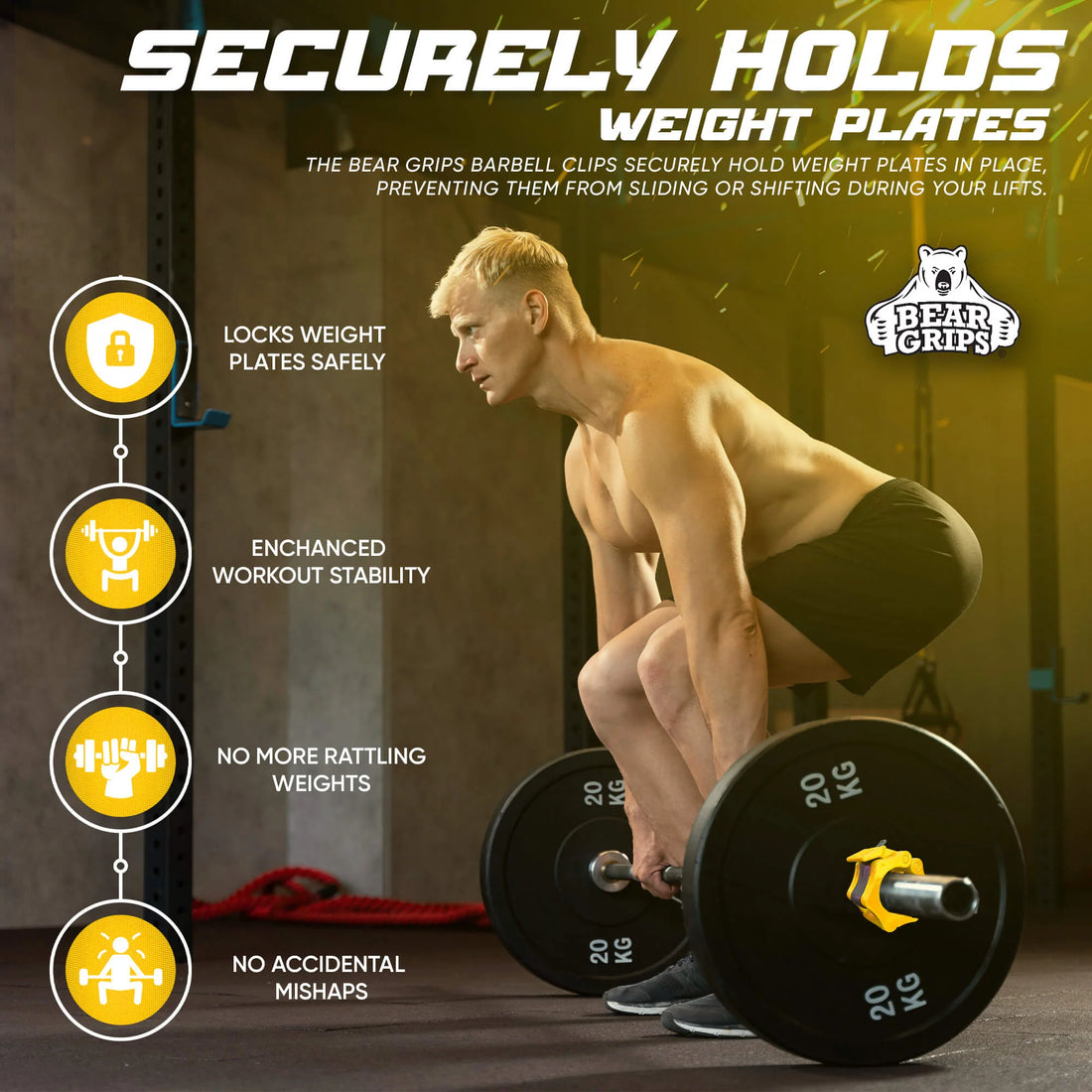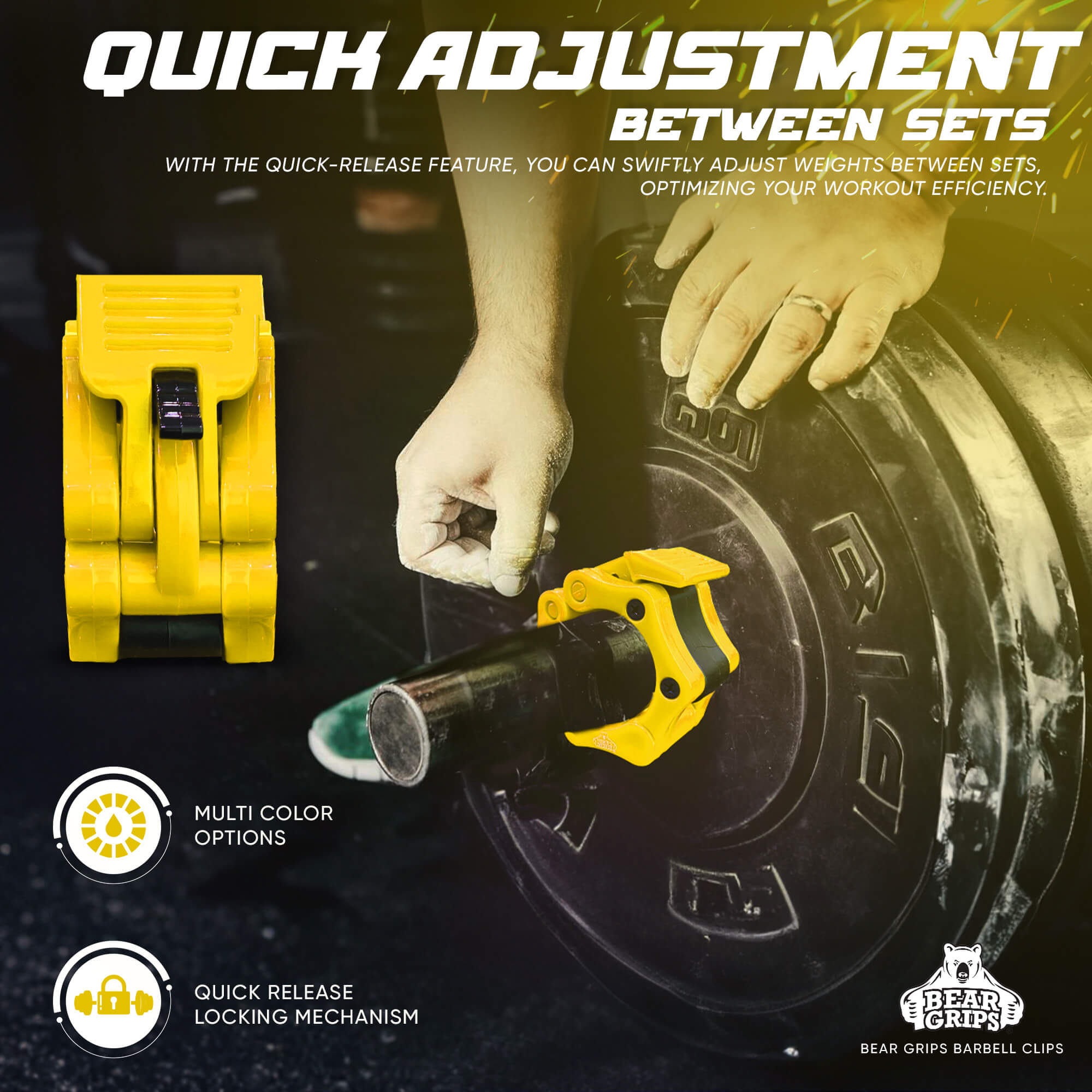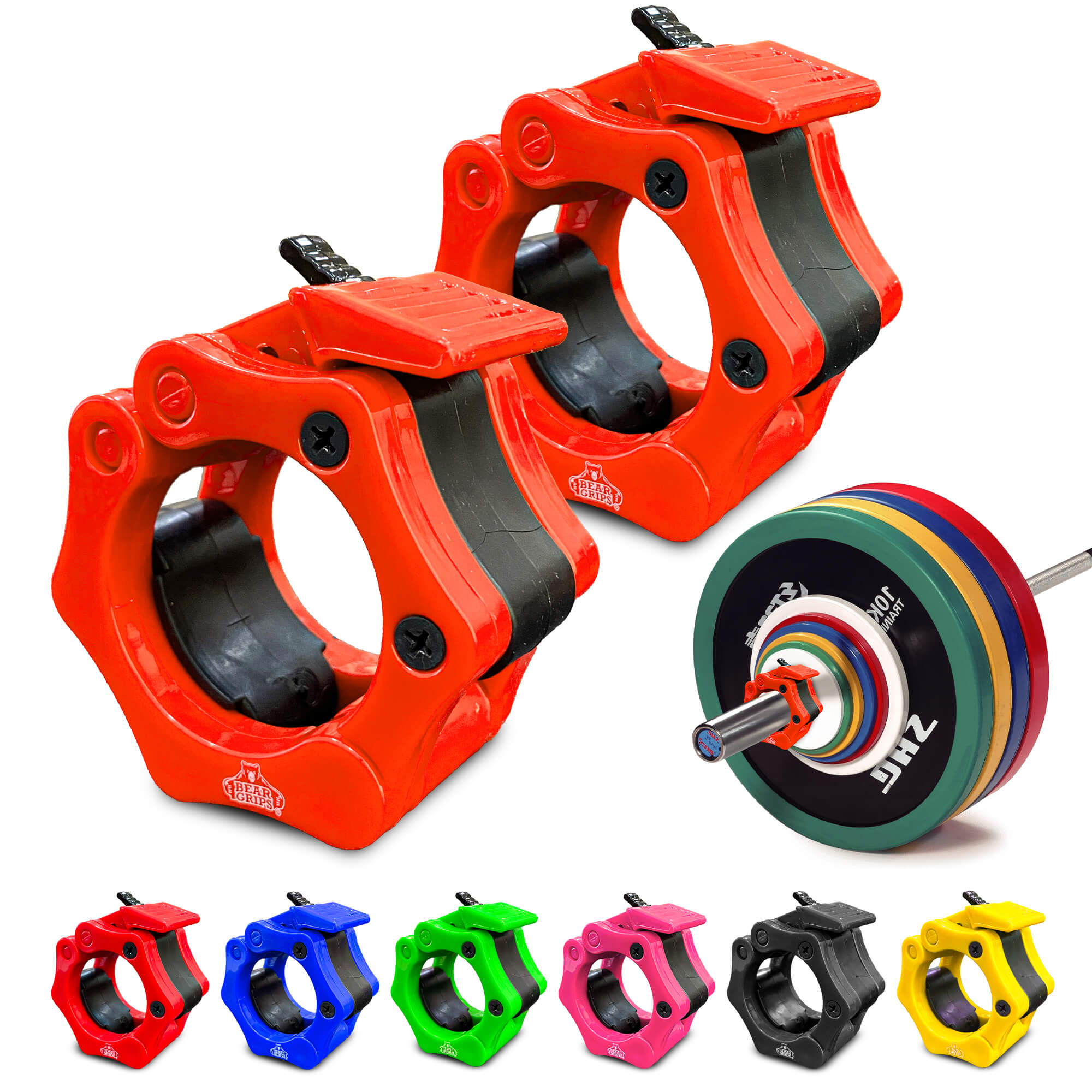
How To Use The Barbell Collars?
Share
Weightlifting, whether for fitness, competition, or personal enjoyment, is a journey filled with challenges and triumphs. An integral part of this journey is ensuring safety and efficiency, and this is where barbell collars come into play. Often overlooked by novices, barbell collars are crucial for a secure weightlifting experience. They are not just accessories but essential tools that stabilize the weights on the bar, preventing them from sliding off during lifts. This introductory guide is dedicated to unraveling the mystery of barbell collars, explaining their importance, and setting the stage for their proper use.
At their core, barbell collars are simple devices. Their primary function is to fasten weight plates onto the barbell, ensuring they stay in place during various exercises. Whether you're a seasoned athlete or a beginner, understanding how to use these collars correctly is vital for your safety. Improperly secured weights can lead to imbalance, increasing the risk of injuries and accidents. Thus, barbell collars are not just about convenience; they are a critical component of safe weightlifting practices.

As we delve into this article, we will explore the different types of barbell collars available in the market, each suited for specific needs and bar types. You'll learn how to choose the right collar for your workout routine and how to use them effectively. We'll also address common mistakes and provide safety tips to ensure you get the most out of your weightlifting sessions without compromising your safety. Lastly, we'll touch upon the maintenance and care of these collars to ensure they remain functional and reliable over time.
So, grab your barbell, and let's dive into the world of barbell collars, starting with understanding the different types available to you.
Types of Barbell Collars: Exploring Different Varieties and Their Uses
When it comes to weightlifting, the type of barbell collar you choose can significantly impact your workout experience. Barbell collars, while small, play a pivotal role in ensuring the weights stay secured on the bar. There are several types of collars available, each designed with specific features and uses in mind. Let's explore some of the most common varieties:
- Spring Clip Collars: These are the most traditional and widely recognized type of barbell collars. Made from a strong metal, spring clip collars are known for their simplicity and effectiveness. They work by squeezing the handles to open the collar, sliding it onto the bar, and then releasing to secure the weights. While they are generally reliable, they may lose tension over time and are not always suitable for heavier lifts.
- Lock-Jaw Collars: A more modern and user-friendly option, lock-jaw collars are made from a durable plastic and feature a locking mechanism. To use them, you simply open the collar, place it on the bar, and then snap it closed. This type of collar provides a more secure grip on the bar, making them ideal for dynamic exercises and heavier weights.
- Magnetic Collars: These are a relatively new addition to the market. Magnetic collars use powerful magnets to hold the weights in place. They are incredibly easy to use and provide a very secure hold, but they tend to be more expensive than other types.
- Screw-Tight Collars: For those looking for a more permanent solution, screw-tight collars are an excellent choice. These collars screw onto the bar, providing an extremely tight and secure fit. However, they are less convenient to remove and replace compared to other types.
- Lever Collars: Lever collars offer a balance between security and convenience. They use a lever to lock the collar in place, providing a firm grip on the bar. These are great for both heavy lifts and quick weight changes.
Understanding the different types of barbell collars and their respective advantages can help you make an informed decision based on your workout style and safety needs. In the following section, we will dive into a detailed guide on how to use these collars effectively.
Step-by-Step Guide to Using Barbell Collars: A Detailed Walkthrough
Using barbell collars correctly is crucial for both safety and the effectiveness of your workout. Regardless of the type of collar you choose, the fundamental steps for securing them on the barbell are similar. Here's a step-by-step guide to help you master this essential skill:
- Select the Right Collar: Before you start, ensure that the collar is compatible with your barbell's diameter. Most standard barbells are 1-inch or 2-inch in diameter, and using the wrong size collar can lead to ineffective securing of the weights.
- Position the Weights: Load the desired amount of weight onto the barbell. Ensure that the weights are evenly distributed on both sides to maintain balance.
- Open the Collar: Depending on the type of collar, you might need to squeeze, unlock, or unscrew it to open. Make sure it's wide enough to slide onto the barbell easily.
- Attach the Collar: Slide the collar onto the barbell, up against the weights. For spring clips, release the handles gently once it's in place. For lock-jaw collars, snap the locking mechanism closed. For screw-tight or lever collars, secure them as per their specific mechanism.
- Double-Check for Security: After attaching the collar, give it a gentle tug to ensure it's securely in place. The collar should not move or slide on the barbell, and the weights should be firmly fixed.
- Repeat on the Other Side: Follow the same steps to secure the collar on the other side of the barbell.
- After Use: Once you are done with your workout, remove the collars by reversing the attachment process. Be mindful to maintain balance on the barbell as you remove the weights.
Remember, the key to effectively using barbell collars lies in ensuring they are securely fastened and the weights are balanced. This not only prevents the weights from sliding off during your exercise but also helps in maintaining the integrity of your barbell over time.

Common Mistakes and Safety Tips: How to Avoid Accidents and Maximize Efficiency
Using barbells and weights in your fitness routine can be highly effective for building strength and muscle, but it's essential to prioritize safety to prevent accidents and injuries. Here are some common mistakes and safety tips to help you avoid accidents and maximize efficiency when using barbells:
1. Poor Form:
- Mistake: Lifting with improper form can lead to injuries and reduce the effectiveness of your workout.
- Safety Tip: Focus on maintaining proper form for each exercise. Seek guidance from a qualified trainer or use mirrors to check your form.
2. Overloading the Bar:
- Mistake: Using too much weight can strain your muscles, joints, and spine.
- Safety Tip: Start with a weight that allows you to perform exercises with proper form and gradually increase it as you become stronger.
3. Neglecting Warm-up and Cool-down:
- Mistake: Skipping warm-up and cool-down can increase the risk of injuries.
- Safety Tip: Spend at least 5-10 minutes warming up with light cardio and dynamic stretches. After your workout, cool down with static stretches to improve flexibility.
4. No Spotter:
- Mistake: Attempting heavy lifts without a spotter can be dangerous if you can't complete the rep.
- Safety Tip: Always have a spotter, especially when lifting heavy weights or performing exercises like bench presses.
5. Not Using Collars:
- Mistake: Failing to secure weights with collars can lead to plates slipping off during exercise.
- Safety Tip: Always use barbell collars to prevent weights from sliding off and causing accidents.
6. Ignoring Safety Clips:
- Mistake: Neglecting safety clips on adjustable barbells can lead to uneven weight distribution and instability.
- Safety Tip: Double-check that safety clips are properly fastened to secure weights in place.
7. Using Worn-out Equipment:
- Mistake: Barbells, plates, and collars can deteriorate over time, increasing the risk of accidents.
- Safety Tip: Regularly inspect your equipment for wear and tear. Replace any damaged or worn-out items.
8. Excessive Ego Lifting:
- Mistake: Trying to impress others by lifting heavier weights than you can handle can lead to injuries.
- Safety Tip: Focus on your own fitness goals and progress at your own pace. Avoid lifting beyond your capabilities.
Maintenance and Care for Barbell Collars: Ensuring Longevity and Performance
Proper maintenance and care for your barbell collars can help ensure their longevity and performance. Here are some tips:
1. Cleanliness:
Regularly wipe down your collars with a damp cloth to remove sweat, dirt, and chalk buildup.
2. Lubrication:
Apply a small amount of silicone or barbell collar-specific lubricant to the moving parts to prevent rust and ensure smooth operation.
3. Storage:
Store your collars in a dry and cool environment to prevent rust and damage.
4. Inspections:
Periodically check for loose screws or any signs of wear and tear. Tighten screws if needed and replace damaged parts promptly.
5. Proper Use:
Use collars only for their intended purpose – securing weights on the barbell. Avoid using them as handles or for any other unintended functions.
6. Impact Prevention:
Avoid dropping or slamming the barbell with excessive force, as this can damage the collars and affect their performance.
7. Replacement:
If your collars show signs of wear, rust, or reduced performance, consider replacing them to maintain safety and effectiveness during your workouts.
By following these safety tips and properly maintaining your barbell collars, you can enhance your workout experience, reduce the risk of accidents, and ensure the longevity and performance of your equipment.

Conclusion
In conclusion, maintaining safety and efficiency in your weightlifting routine is crucial for achieving your fitness goals while minimizing the risk of injuries. We've discussed the importance of proper form, using collars to secure weights, and caring for your equipment.
To ensure you have the right tools for a safe and efficient workout, we recommend the Barbell Clamp Collars Quick Release from Bear Grips. These collars are designed with quality and convenience in mind, allowing you to securely fasten weights to your barbell quickly and easily.
Don't compromise on safety and performance – visit Bear Grips today to explore their range of barbell clamp collars. Elevate your fitness routine and invest in the equipment that helps you reach your fitness goals while keeping you safe throughout your workouts. Your journey to a stronger, healthier you starts with the right gear, and Bear Grips has you covered. Click the link and make your purchase now!


